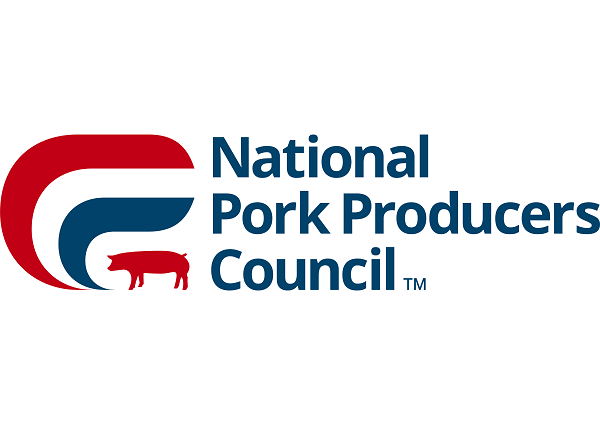
Tariff Updates: Trump Pauses Tariffs on Canada, Mexico; Duty on China Stays
What Happened: The U.S. delayed a planned 25% tariff increase on imports from Canada and Mexico for 30 days as part of ongoing discussions on immigration and drug control. However, a 10% duty on Chinese imports remains in place, leading to retaliatory tariffs from China on coal, LNG, and U.S. agricultural products. The move has sparked concerns among agricultural exporters, particularly pork producers, who heavily rely on stable trade relations with these key markets.
A canceled meeting between President Trump and Chinese President Xi Jinping has further escalated tensions. In response, China imposed additional tariffs on U.S. commodities, including a 15% duty on coal and liquefied natural gas and 10% tariffs on crude oil, agricultural equipment, and U.S. auto imports.
Swine Web’s Take: Retaliatory tariffs could significantly impact U.S. pork exports, potentially reducing market access and profitability. With China, Canada, and Mexico among the top importers of U.S. pork, trade stability remains crucial. Producers should prepare for potential fluctuations in demand and explore alternative markets to mitigate risk.
2024 U.S. Pork Exports Break Records
What Happened: U.S. pork exports in 2024 surpassed previous records, reaching over $8.6 billion, a 6% increase from 2023. More than 3 million metric tons of pork were exported worldwide, with Mexico leading as the top buyer.
Top 5 U.S. Pork Markets in 2024 (by Value):
- Mexico: 1.15 million MT valued at $2.6 billion (+10% from 2023)
- Japan: 336,000 MT, $1.4 billion
- China: 475,000 MT, $1.1 billion
- Canada: 212,000 MT, $853 million
- South Korea: 214,000 MT, $728 million (+15%)
While Mexico and South Korea saw double-digit growth, China, Canada, and Japan experienced declines in both value and volume compared to 2023. Additionally, smaller markets, including Panama (+71%), Colombia (+32%), and Malaysia (+51%), showed significant year-over-year growth in U.S. pork imports.
Swine Web’s Take: Strong export growth continues to drive demand for U.S. pork, benefiting producers. However, trade disputes and shifting global demand could pose risks in 2025. Maintaining market access and fostering new trade agreements will be essential for sustaining momentum.
Industry Finalizes H5N1 Response Plan
What Happened: The pork industry, led by NPPC, finalized an H5N1 response plan in collaboration with state and federal agencies. The plan ensures consistent disease response measures and biosecurity protocols to mitigate risks of outbreaks within the swine industry.
Recent data indicates that 153.7 million poultry and nearly 1,000 dairy herds have been impacted by H5N1, with 67 human cases confirmed among poultry and dairy workers. The virus was detected in two backyard pigs in Oregon in late 2024, raising concerns over potential cross-species transmission.
Swine Web’s Take: With the potential for cross-species transmission, biosecurity remains a top priority for pork producers. Tightening control measures, monitoring animal health, and collaborating with veterinarians are crucial steps in preventing outbreaks.
Ag Secretary Nominee Rollins Advances to Full Senate Vote
What Happened: President Trump’s nominee for Agriculture Secretary, Brooke Rollins, was unanimously approved by the Senate Agriculture Committee. Rollins emphasized her commitment to supporting U.S. pork exports and **resolving challenges po**sed by California’s Prop 12.
Swine Web’s Take**:** Rollins’ confirmation could bring much-needed regulatory clarity and advocacy for pork producers, especially in addressing Prop 12’s restrictions. Pork industry stakeholders should remain engaged with policymakers to ensure favorable outcomes.
Trump’s USTR Pick Has Confirmation Hearing
W**hat Happened:** Jamieson Greer, nominee for U.S. Trade Representative, had his confirmation hearing. He emphasized the importance of securing international markets for U.S. agricultural producers and maintaining competitive trade agreements. Greer has prior experience in trade negotiations, having served as Chief of Staff to former USTR Robert Lighthizer, where he played a key role in negotiating the U.S.-Mexico-Canada Agreement (USMCA).
Swine Web’s Take: As trade remains a key driver for pork profitability, a strong USTR leader is essential to expanding export opportunities and resolving disputes. The confirmation of Greer could provide more stability in trade agreements crucial to pork producers.
NPPC’s Lori Stevermer to Testify Before Senate Ag Committee
NPPC President Lori Stevermer will address the Senate Agriculture Committee on the state of the U.S. pork industry, covering trade, market access, and industry challenges. Her testimony is expected to highlight the impact of tariffs, foreign animal disease preparedness, and regulatory hurdles facing pork producers.
➡ **Watch the testimony live **here
Swine Web continues to bring insightful analysis and real-time updates on industry policies, trade developments, and key issues shaping the pork sector. Stay tuned for next week’s recap!





